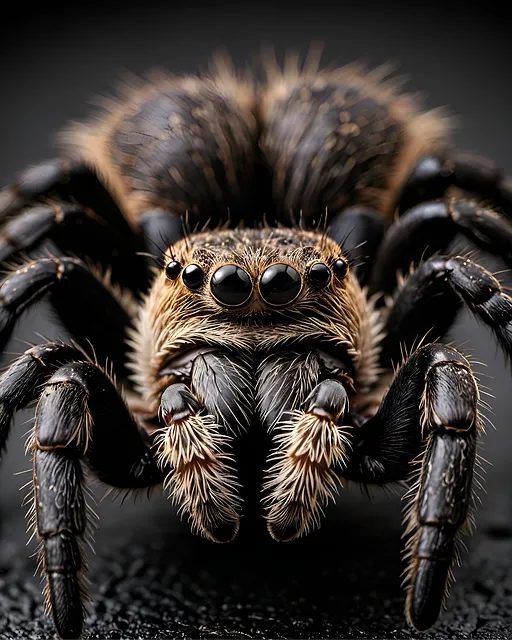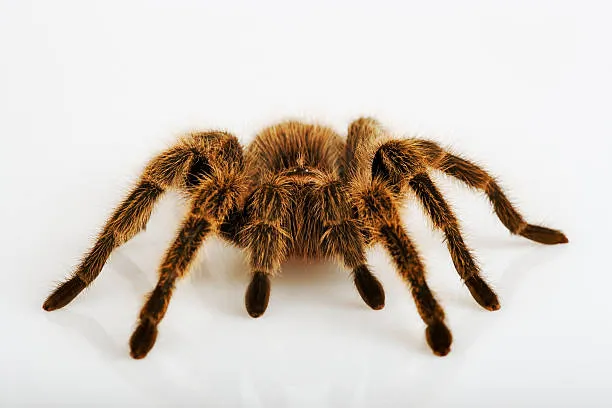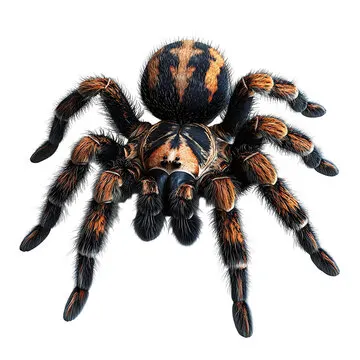Interesting facts about Tarantula

Tarantulas are among the most iconic and misunderstood spiders on the planet. Known for their large size, hairy bodies, and often intimidating appearance, they’ve become both feared and admired in popular culture. Yet despite their reputation, tarantulas are generally docile, slow-moving, and shy creatures that play vital roles in ecosystems. Found mostly in warm regions across the Americas, Africa, Asia, and Australia, tarantulas are fascinating animals with many unique traits.
Classification and Physical Characteristics
- Scientific Classification:
- Kingdom: Animalia
- Phylum: Arthropoda
- Class: Arachnida
- Order: Araneae
- Family: Theraphosidae
- Size: Most tarantulas range from 4.5 to 11 inches (11–28 cm) in leg span.
- Coloration: Varies widely—brown, black, red, blue, green, and even iridescent hues.
- Body Parts: Like all spiders, tarantulas have eight legs, two body segments (cephalothorax and abdomen), and chelicerae (fangs).
Interesting Facts About Tarantulas
1. They Are Not As Dangerous As They Look
Despite their fearsome look, tarantula bites are rarely dangerous to humans. Their venom is typically no worse than a bee sting—unless a person is allergic.
2. They Can Live for Decades
Female tarantulas can live up to 30 years in captivity, while males typically live only 5 to 10 years, often dying soon after reaching maturity and mating.
3. They Flick Hairs as a Defense
Many New World tarantulas (from the Americas) possess urticating hairs—tiny barbed bristles on their abdomen. When threatened, they kick these hairs into the air, causing irritation to the skin, eyes, or mucous membranes of predators.
4. They Don’t Spin Webs to Catch Prey
Unlike many other spiders, tarantulas do not build webs to trap food. Instead, they are ambush predators, relying on stealth and power to capture insects, small mammals, amphibians, or reptiles.

5. They Are Surprisingly Gentle
In captivity, many species of tarantulas are docile and calm, making them popular exotic pets. Some can even be handled with care.
6. They Molt to Grow—and Heal
Tarantulas periodically shed their exoskeleton in a process called molting. This allows them to grow, regenerate lost limbs, and replace internal structures like fangs.
Juveniles molt frequently, while adults do so less often.
7. They Have Poor Eyesight
Despite having up to eight eyes, tarantulas don’t see well. They rely on vibrations through their legs and hairs to detect prey and danger.
8. They Can Climb and Dig
Some species are arboreal (tree dwellers), while others are terrestrial burrowers. Tree-dwellers have adapted to climb using tiny claws and sticky hairs. Burrowing species dig complex underground tunnels for safety and ambush.
9. Some Species Are Brightly Colored
Tarantulas are not all drab—species like the Greenbottle Blue, Cobalt Blue, or Pinktoe Tarantula are known for their vibrant hues and shimmering exoskeletons.
10. They Are Found All Over the World
There are over 1,000 known species of tarantulas, found in South and Central America, the southern United States, Africa, parts of Asia, and Australia. They typically inhabit warm, dry environments.
Reproduction and Life Cycle
- Courtship: Males perform vibrational dances on the female’s web to indicate peaceful intentions.
- Mating: Males transfer sperm using specialized appendages called pedipalps.
- Eggs: Females lay up to 1,000 eggs in a silk egg sac.
- Spiderlings: Hatch after several weeks and disperse into the wild.
- Male tarantulas often die soon after mating, while females may live for many more years.
Tarantulas as Pets
Tarantulas are one of the most commonly kept arachnids in the exotic pet trade. They are quiet, low-maintenance, and require little space. Popular species include:
- Chilean Rose Hair
- Mexican Redknee
- Pinktoe Tarantula
- Curly Hair Tarantula
However, potential owners should be aware of:
- Their long lifespan
- Molting behavior
- Handling risks (including urticating hairs and stress)
Ecological Role
Tarantulas help maintain insect populations and are prey to animals like birds, reptiles, and mammals. Their venom and silk are of scientific interest, with potential uses in medicine, agriculture, and material science.
Conservation Status
While most tarantula species are not endangered, some face threats from:
- Habitat destruction
- Climate change
- Overcollection for the pet trade
Many countries now regulate tarantula export, and captive breeding programs are increasingly encouraged.

Conclusion
Tarantulas are gentle giants of the arachnid world. With their unique behaviors, long lifespans, and surprisingly calm nature, they offer a fascinating window into the diversity of life. Whether you admire them from afar or keep one as a pet, tarantulas deserve a spot among nature’s most impressive and misunderstood creatures.



